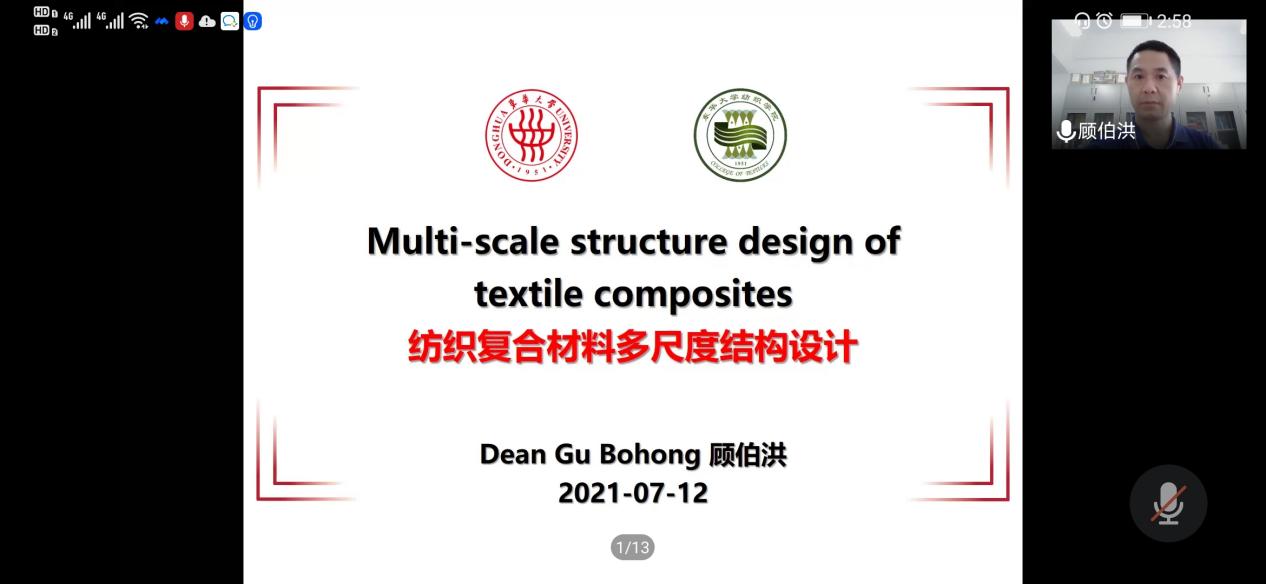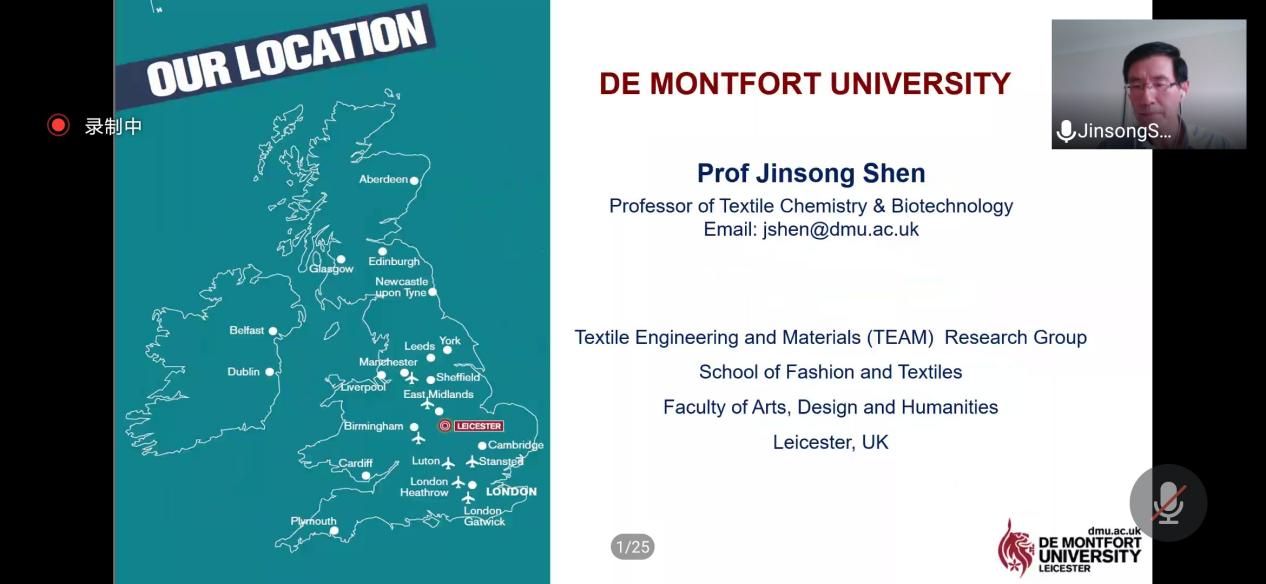2021 Shanghai International Textile Graduate Summer School Teaching Briefing
NO. 4 July 12, 2021 email: itgss2021@126.com
2021 organizing committee of Shanghai Textile Graduate International Summer School, Writing: Wang Yichao,Translation: Li Shiyun
On July 12, Prof. Wang Xungai from Deakin University, Prof. Xu Yingjiao from North Carolina State University, Prof. Gu bohong from Donghua University, and Prof. Shen Jinsong from De Montfort University brought us inspiring academic reports.
Professor Wang Xungai gave the first lecture -- Textile and Colour Recycling for Fashion Sustainability. First of all, Professor Wang introduced the current situation of pollution caused by denim dyeing, emphasizing the urgency of developing the denim dye which produces no waste, no chemical and no waste liquid. He then showed us the process of recycling dye from discarded denim fabric and then redyeing of it. Further more, various challenges of recycling dye from denim fabric and its applications were pointed out, such as reducing cost, recycling of solvent and yarn blending. After the lecture, Professor Wang patiently answered the questions from students one by one.
Next, Professor Xu Yingjiao brought the second lecture on the topic of Consumer Behavior and the Textiles Industry. Professor Xu systematically introduced the definition of consumer behavior, the way and plan of consumers to obtain products, products evaluation and consuming, as well as the reasons and patterns for disposing products. Professor Xu stressed that more attention should be paid to the specific behaviors of specific groups when selecting research subjects.
The lecture related to the multi-scale structure design of textile composites was given by Professor Gu bohong. Firstly, he emphasized the strategic significance of textile composition by showing their applications and uniqueness. Then the concept and design was introduced. In addition, Professor Gu compared various properties of different kinds of fibers, such as glass fiber, aramid fiber, carbon fiber and other high-performance fibers. At the end, according to some specific examples, Professor Gu explained the advantages and disadvantages, design methods and principles, and performance characterization of unidirectional layers and laminated material.
Lastly, Professor Shen began the first class of the series lecture: Innovative Technology for Textile Functionality and Sustainability. Starting from the traditional wet processing of the fabric finishing, Professor Shen introduced three latest environmentally friendly methods of textile finishing: plasma treatment, laser processing and self-cleaning. What’s more, Professor Shen also pointed out that through coating the surface of titanium dioxide particles or introducing fluorocarbons onto the surface, superhydrophobic fabrics could be obtained.





